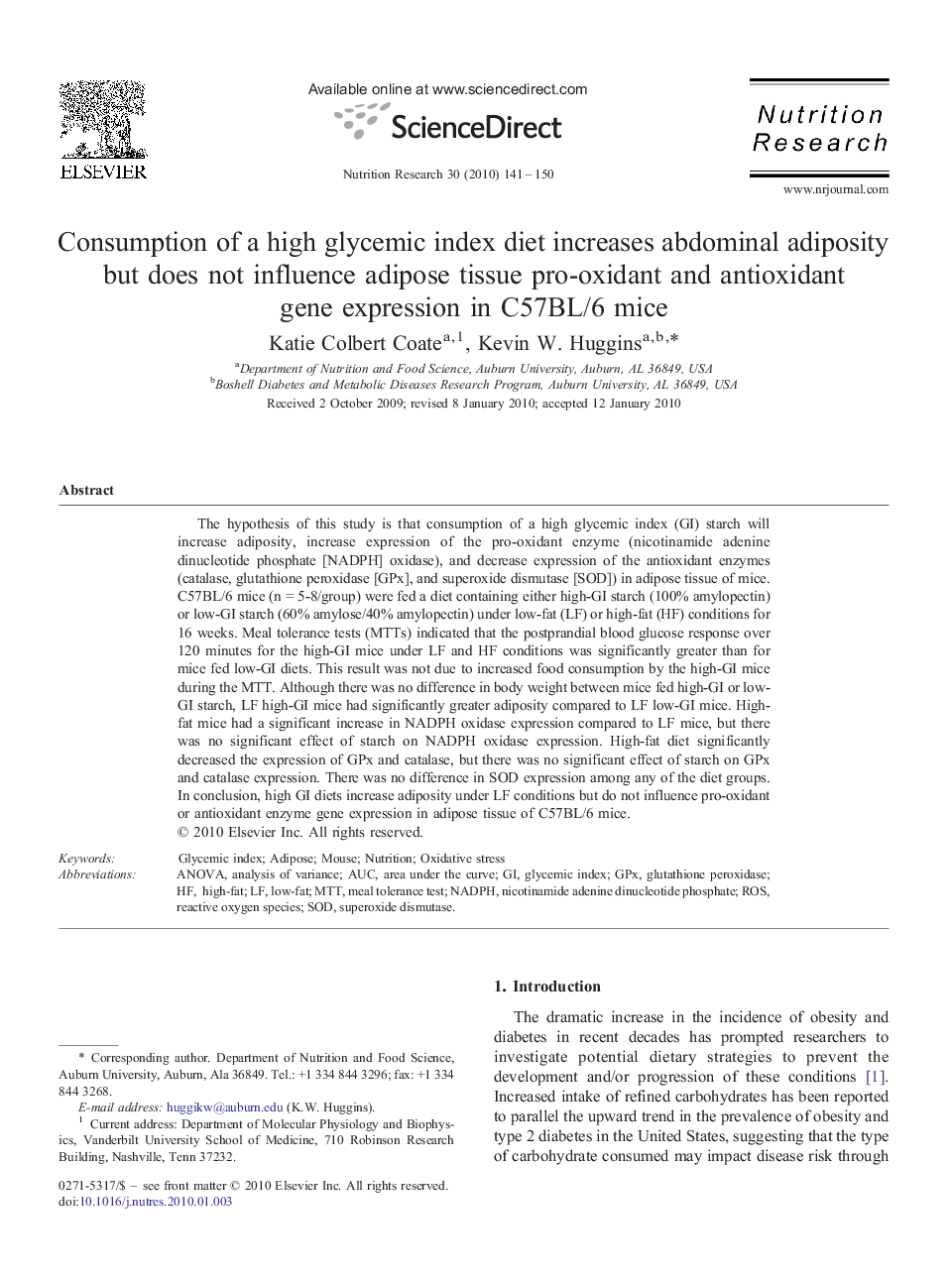| Article ID | Journal | Published Year | Pages | File Type |
|---|---|---|---|---|
| 2809777 | Nutrition Research | 2010 | 10 Pages |
The hypothesis of this study is that consumption of a high glycemic index (GI) starch will increase adiposity, increase expression of the pro-oxidant enzyme (nicotinamide adenine dinucleotide phosphate [NADPH] oxidase), and decrease expression of the antioxidant enzymes (catalase, glutathione peroxidase [GPx], and superoxide dismutase [SOD]) in adipose tissue of mice. C57BL/6 mice (n = 5-8/group) were fed a diet containing either high-GI starch (100% amylopectin) or low-GI starch (60% amylose/40% amylopectin) under low-fat (LF) or high-fat (HF) conditions for 16 weeks. Meal tolerance tests (MTTs) indicated that the postprandial blood glucose response over 120 minutes for the high-GI mice under LF and HF conditions was significantly greater than for mice fed low-GI diets. This result was not due to increased food consumption by the high-GI mice during the MTT. Although there was no difference in body weight between mice fed high-GI or low-GI starch, LF high-GI mice had significantly greater adiposity compared to LF low-GI mice. High-fat mice had a significant increase in NADPH oxidase expression compared to LF mice, but there was no significant effect of starch on NADPH oxidase expression. High-fat diet significantly decreased the expression of GPx and catalase, but there was no significant effect of starch on GPx and catalase expression. There was no difference in SOD expression among any of the diet groups. In conclusion, high GI diets increase adiposity under LF conditions but do not influence pro-oxidant or antioxidant enzyme gene expression in adipose tissue of C57BL/6 mice.
